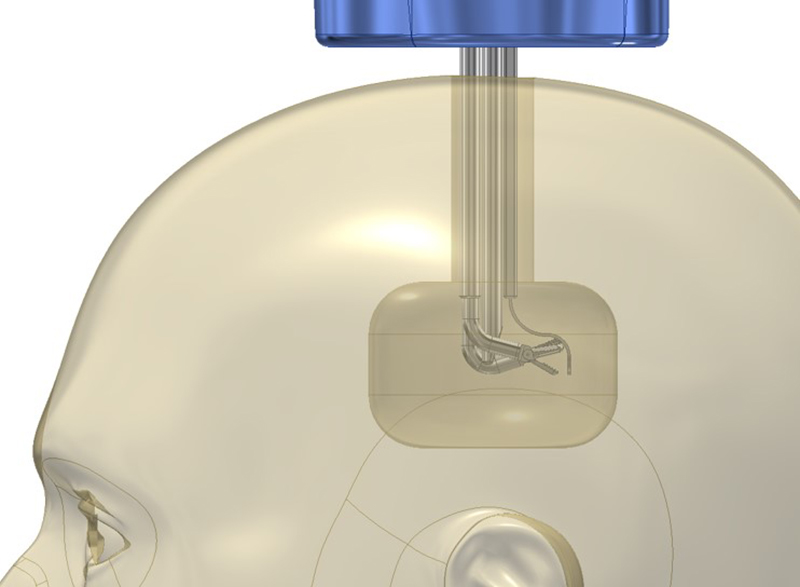Neurosurgery is an intricate task. So, it may come as a surprise that this field has not delved into the use of robotics yet. In response, Dr. John Abrahams, Chief of Neurosurgery at Northern Westchester Hospital in Mount Kisco, NY, and surgeon at Brain & Spine Surgeons of New York, has collaborated with Honeybee Robotics to start development on a cranial robot with four arms and steerable camera for the future of neurosurgery.
It all started with researching robotics. Dr. Abrahams noticed a reoccurring theme that when it came to robotics, the research was relatively antiquated for the neurosurgery field. That’s when he started to brainstorm.
“I can use two hands, and my assistant has two hands but doesn’t always know what I’m going to do next,” Abrahams said. “Wouldn’t it be cool if I had four hands? Then I could really be better than with just two hands.”
This is where the idea of a four-armed robot with both hand controls and foot controls manifested. The concept is to have four working robotic-arms and a steerable microscope that can help surgeons see in difficult places and perform difficult tasks, which is ultimately controlled by a surgeon from a nearby operating room.
As neurosurgery is a very intricate task, the advantage of the four-armed robot in this application is the ability to make smaller incisions and smaller exposures in the brain itself. They will also be able to operate in areas of the brain that are difficult for human hands to maneuver in, and improve the efficiency of doing surgeries as surgeons are trained to use “four arms.”
Currently, the scientists are making the arms one-by-one, until they can combine the structure into a four-armed robot. The first piece of the puzzle is called the ‘Smart Retractor,’ which is a motorized circuit control that can essentially make ‘S’ turns. This holds the tissue matter that the surgeon is operating on and can pull it away or towards the surgeon.
“But the beauty is that we would make it foot controlled,” Abrahams said. “It’s not on the market yet, it’s being developed but the concept is that you actually have a foot controller, so as you’re operating you now have a third-arm to kind of help you.”
The second piece is a smart tool dissector, that will look like a snake. This arm can go in any kind of direction and make precise incisions.

Photo Credit: Northern Westchester Hospital and Honeybee Robotics
“The goal is to bring these arms out one at a time, and introduce them into the market to get surgeon feedback,” Abrahams said. “I want to make sure we have a field of use and that people think it’s a good concept.”
The adaptation and training of the robot would start with surgeons performing simple tasks such as removing blood clots. Then, after surgeons performed a certain amount of cases, they would move onto more complicated tasks such as working on simple tumors and finally moving onto complex surgeries.
Abrahams said they are hoping to bring this robot to fruition within three to five years. Abrahams is not worried about transitioning this into the patient world.
“Patients love two buzz words: lasers and robotics,” Abrahams said. “They would love to hear a robot is helping their surgery, because that’s cutting edge technology. But ultimately, the robot cannot make a move without the surgeon initiating the move. It’s surgeon-driven.”
Although, patients may buzz at robotics, surgeons may have to adopt an entire new culture of using their hands. Abrahams said once they trust the device in their hands and develop a type of comradery with the robot, the momentum will really push when surgeons realize they can do tasks better and faster in certain cases.
“The exciting thing is we want to take something to fruition,” Abrahams said. “We’ll be one of the first practices, and ultimately companies, that actually develops something that can go out there and make a difference in patient surgeries and outcomes.”

Dr. Abrahams joined Brain & Spine Surgeons of New York in 2004 as their sixth surgeon in the group. In 2012, he was named Chief of Neurosurgery at Northern Westchester Hospital and founded the Westchester Neuroscience Institute. He took over as President of the group in 2014. In 2016, Dr. Abrahams developed a concept to incorporate robotics into basic Neurosurgical procedures.




